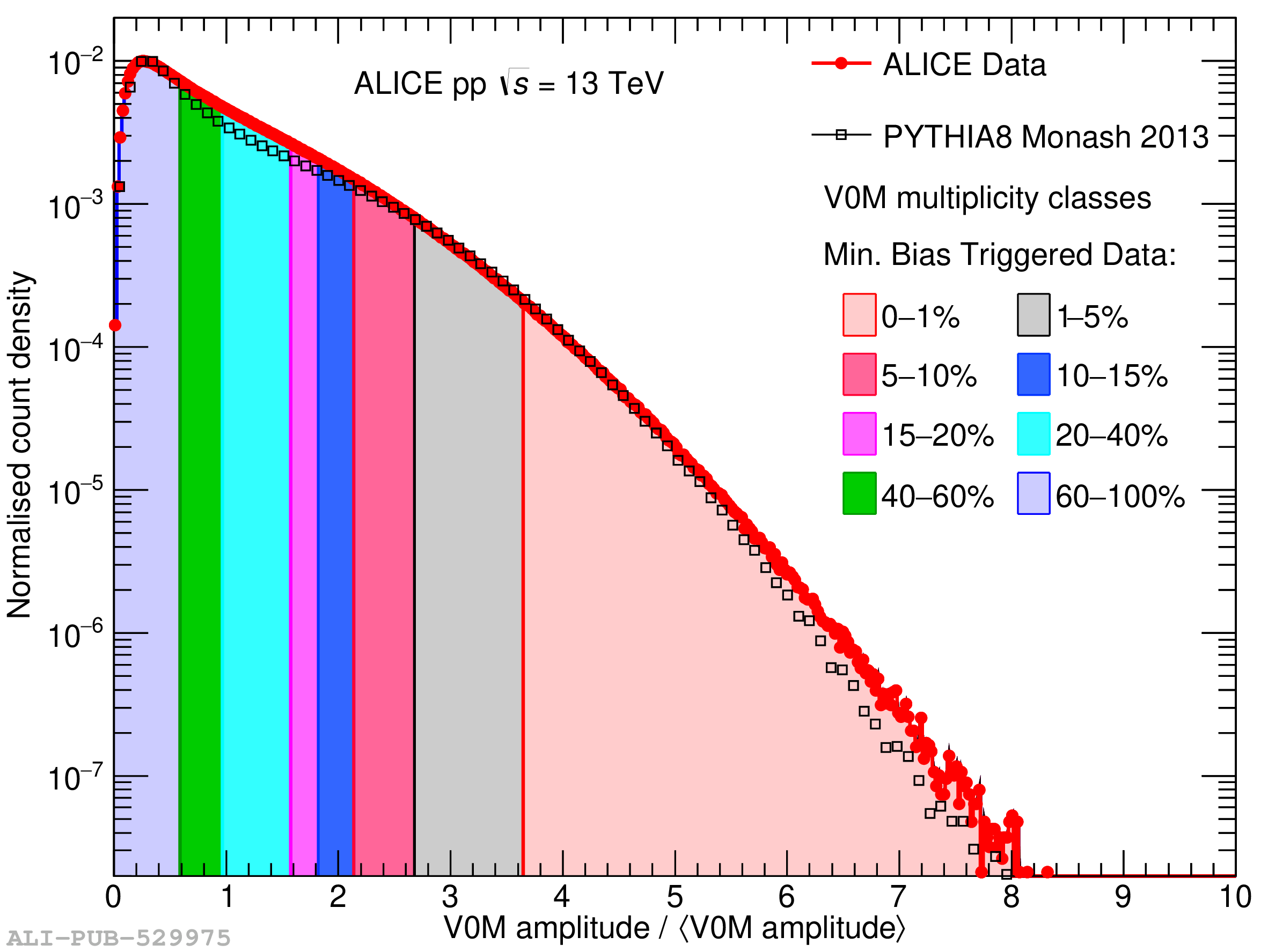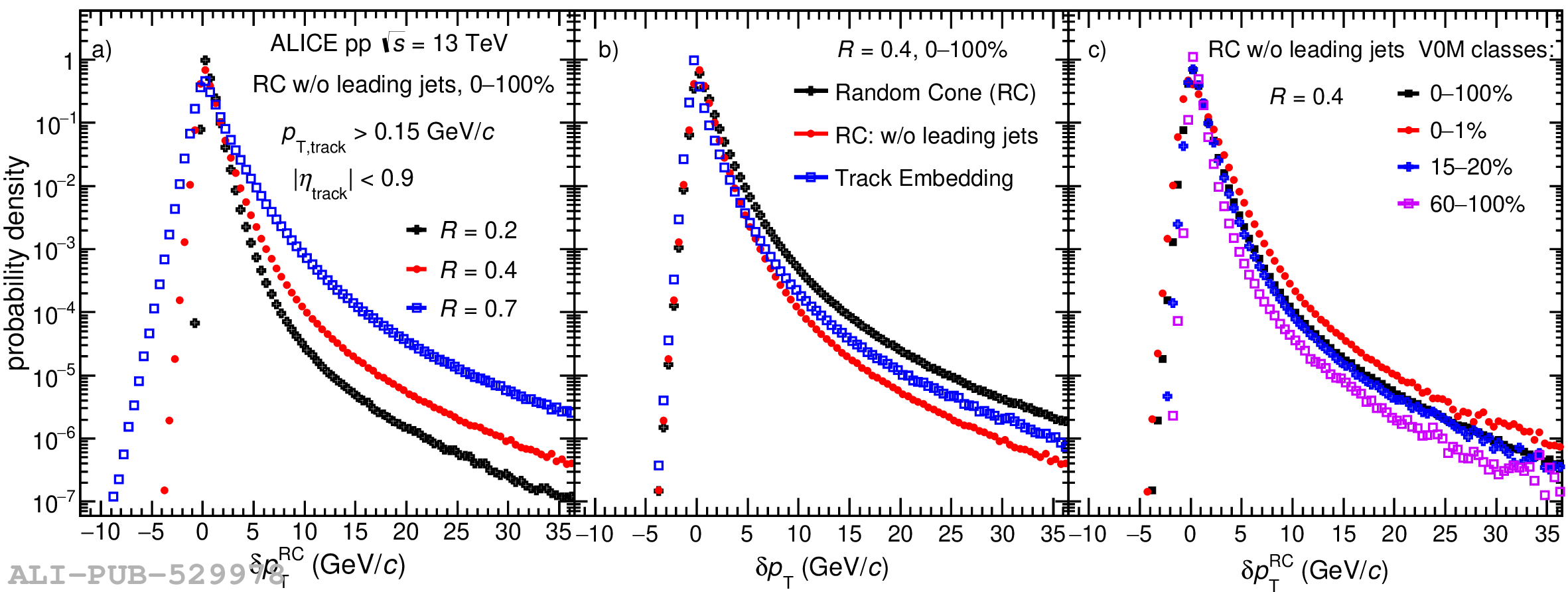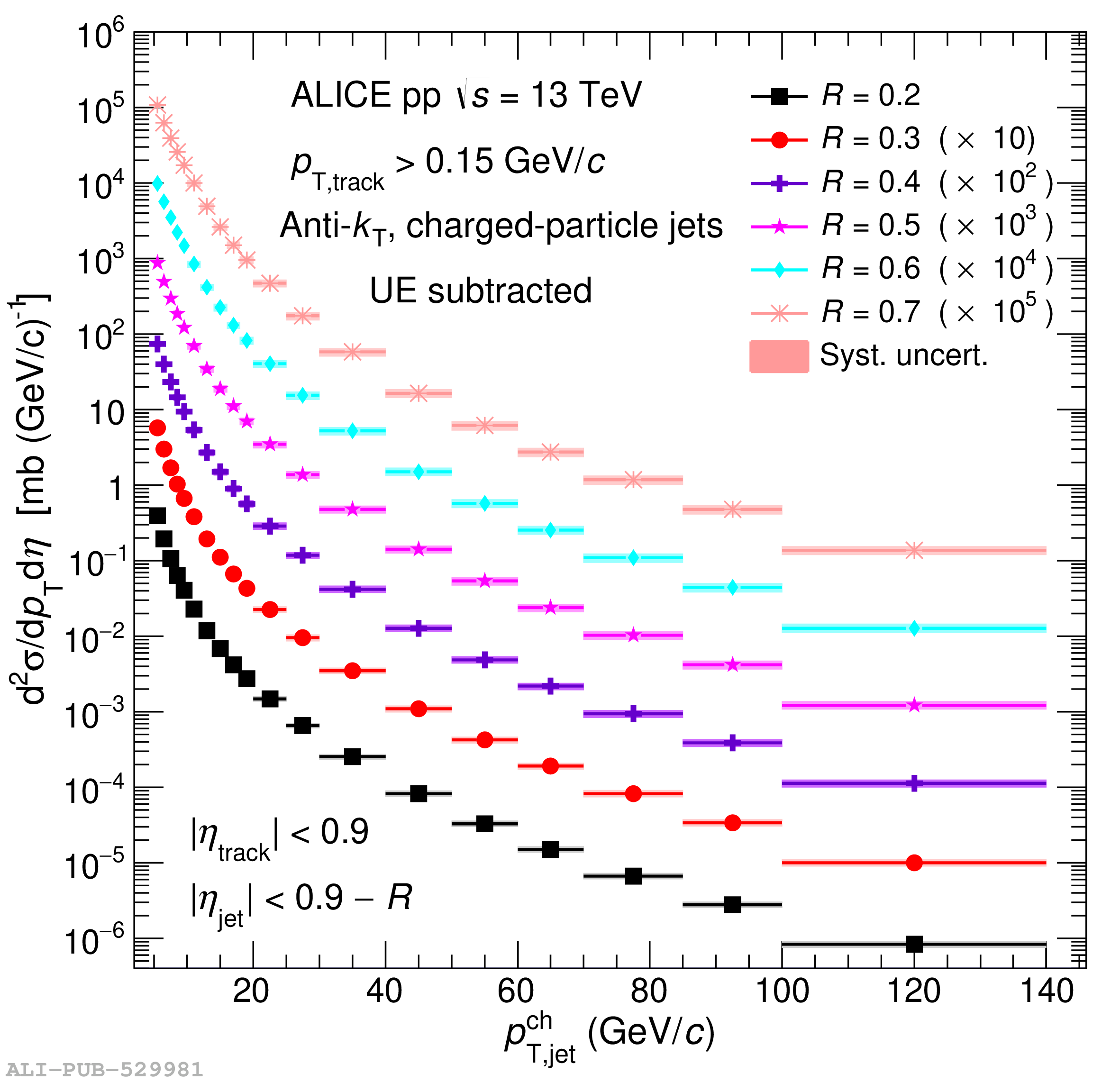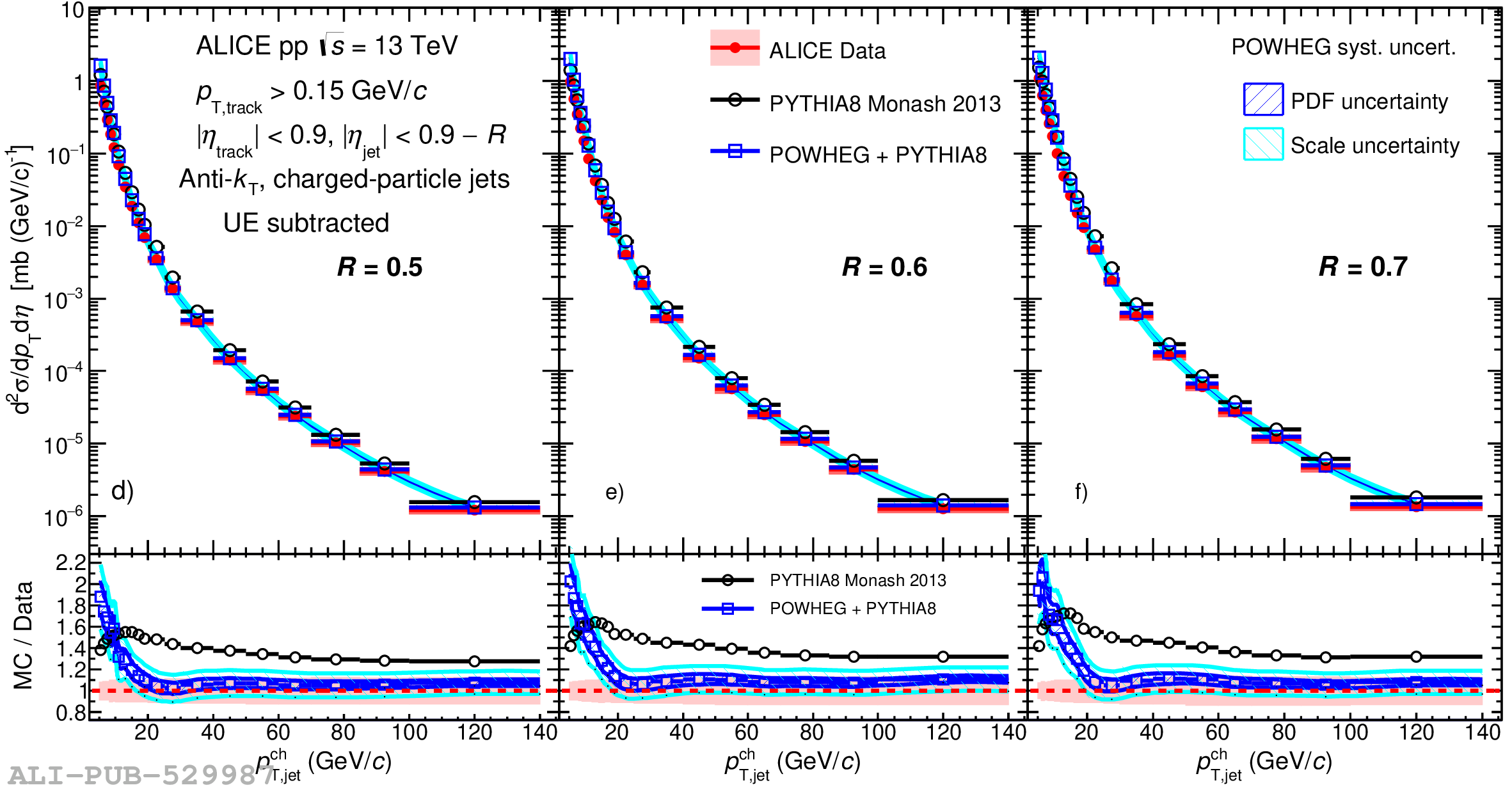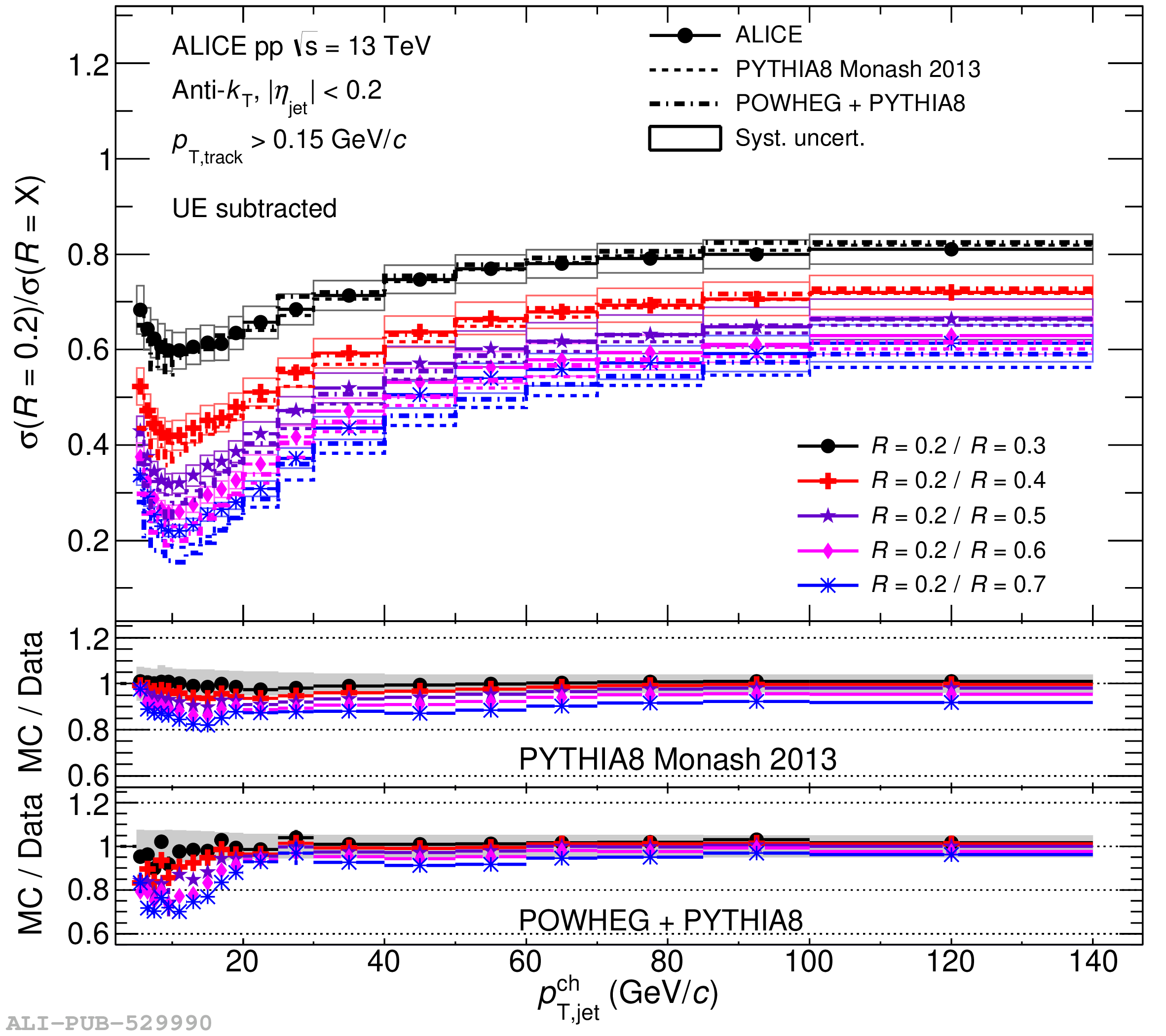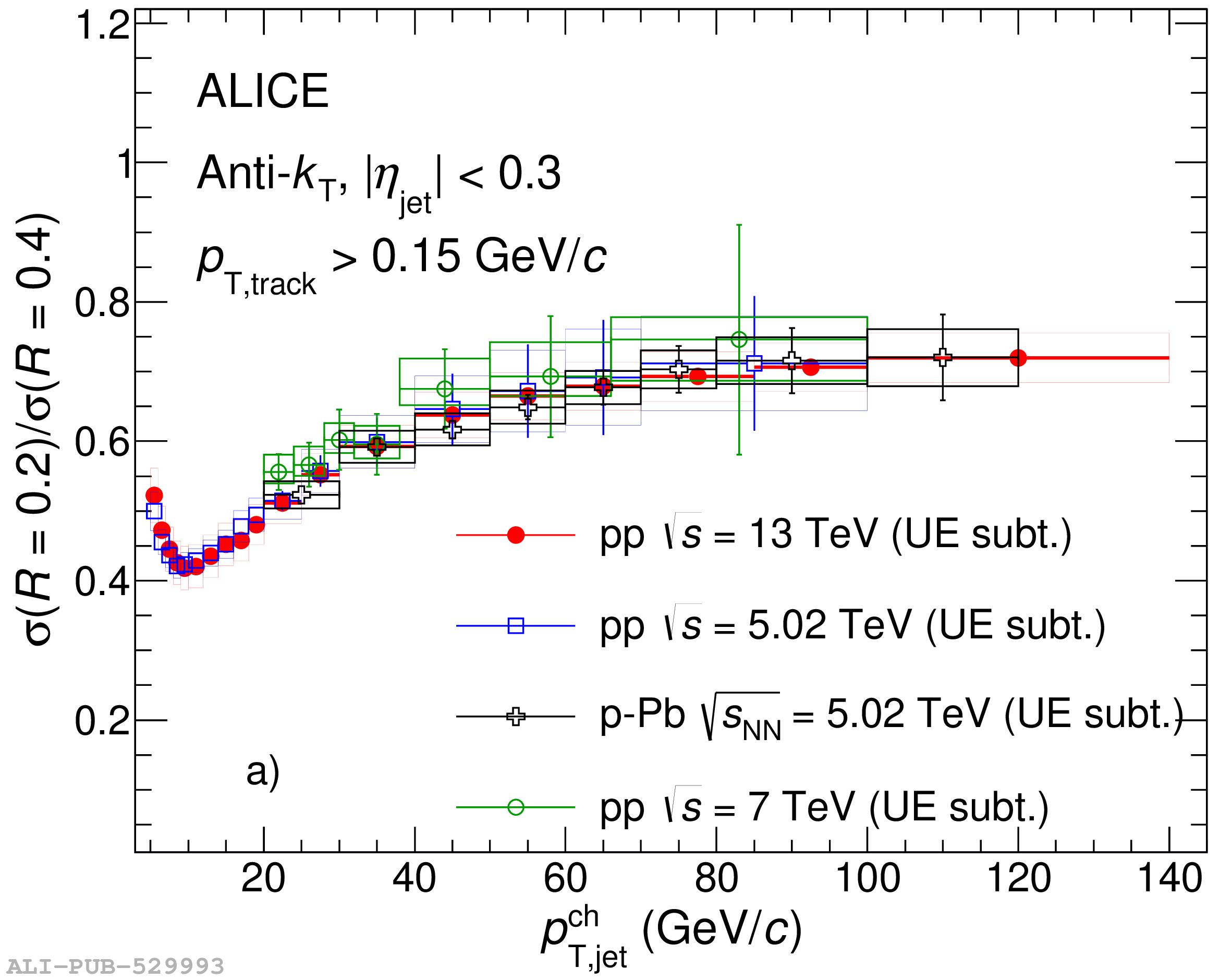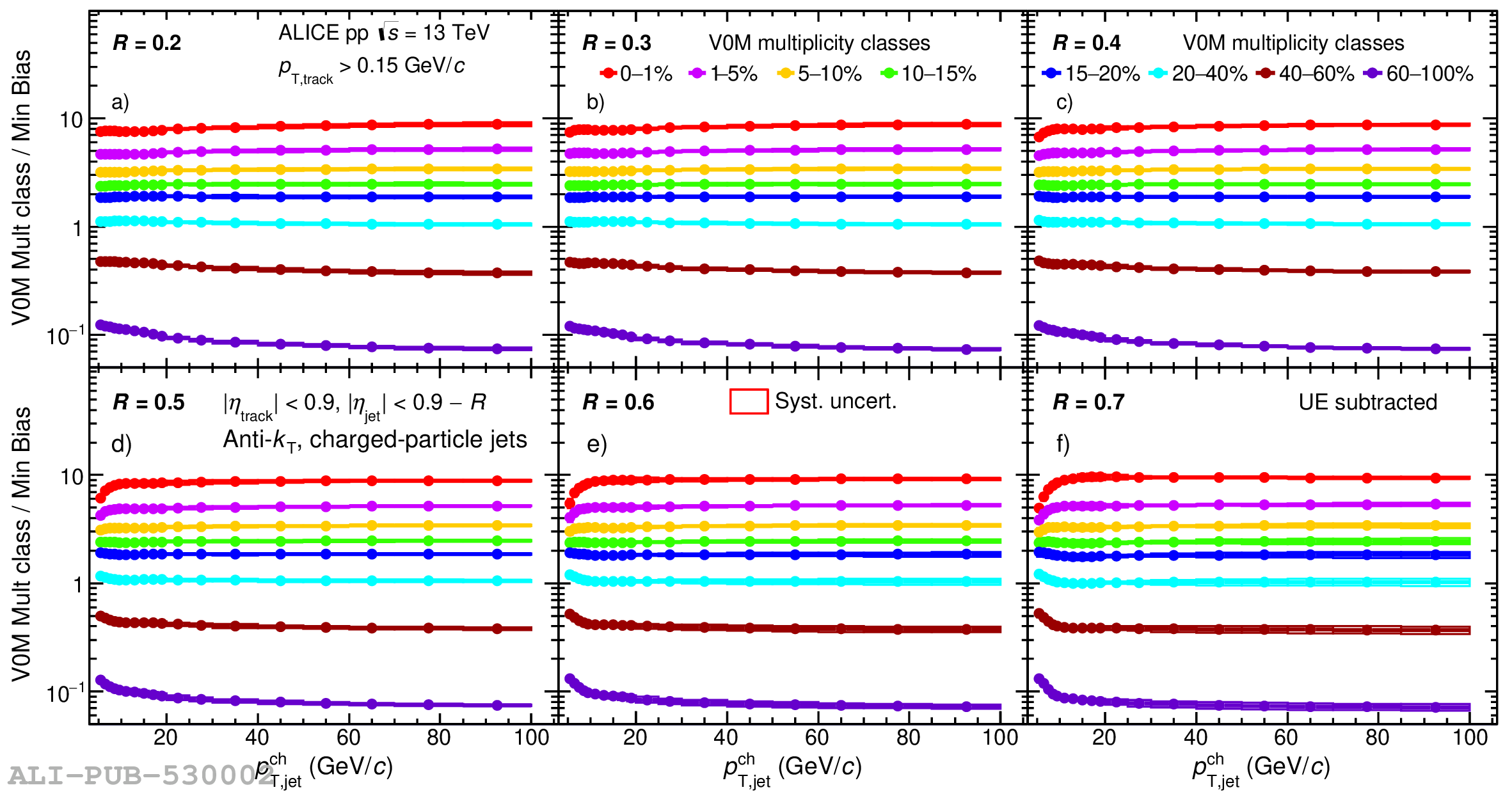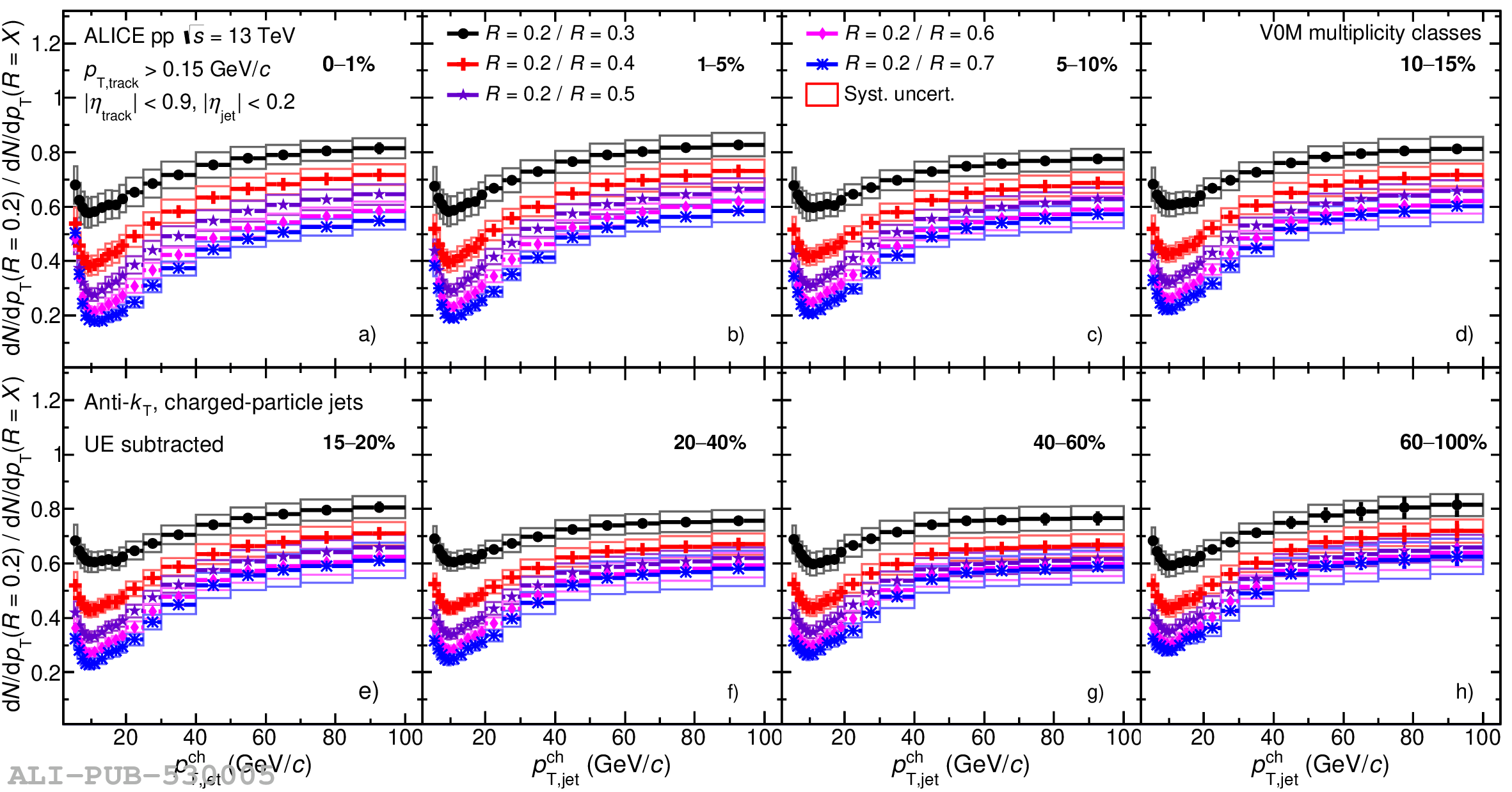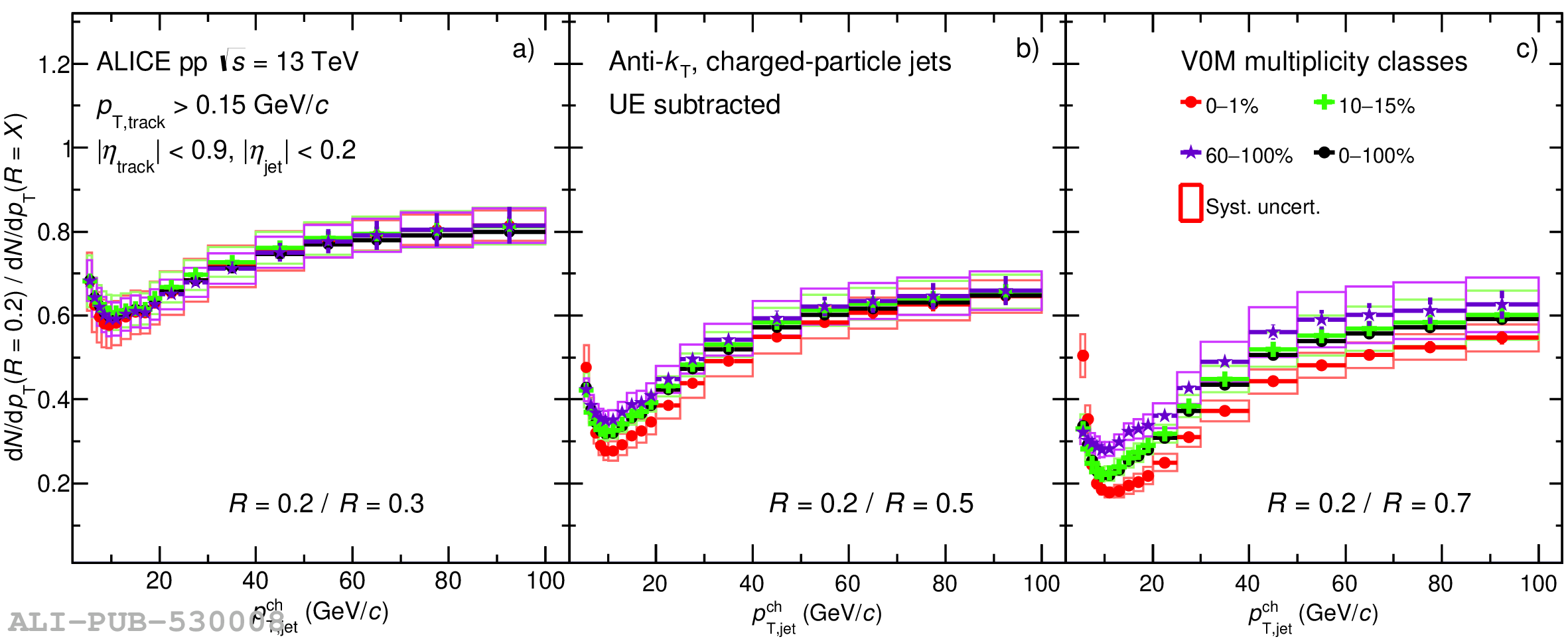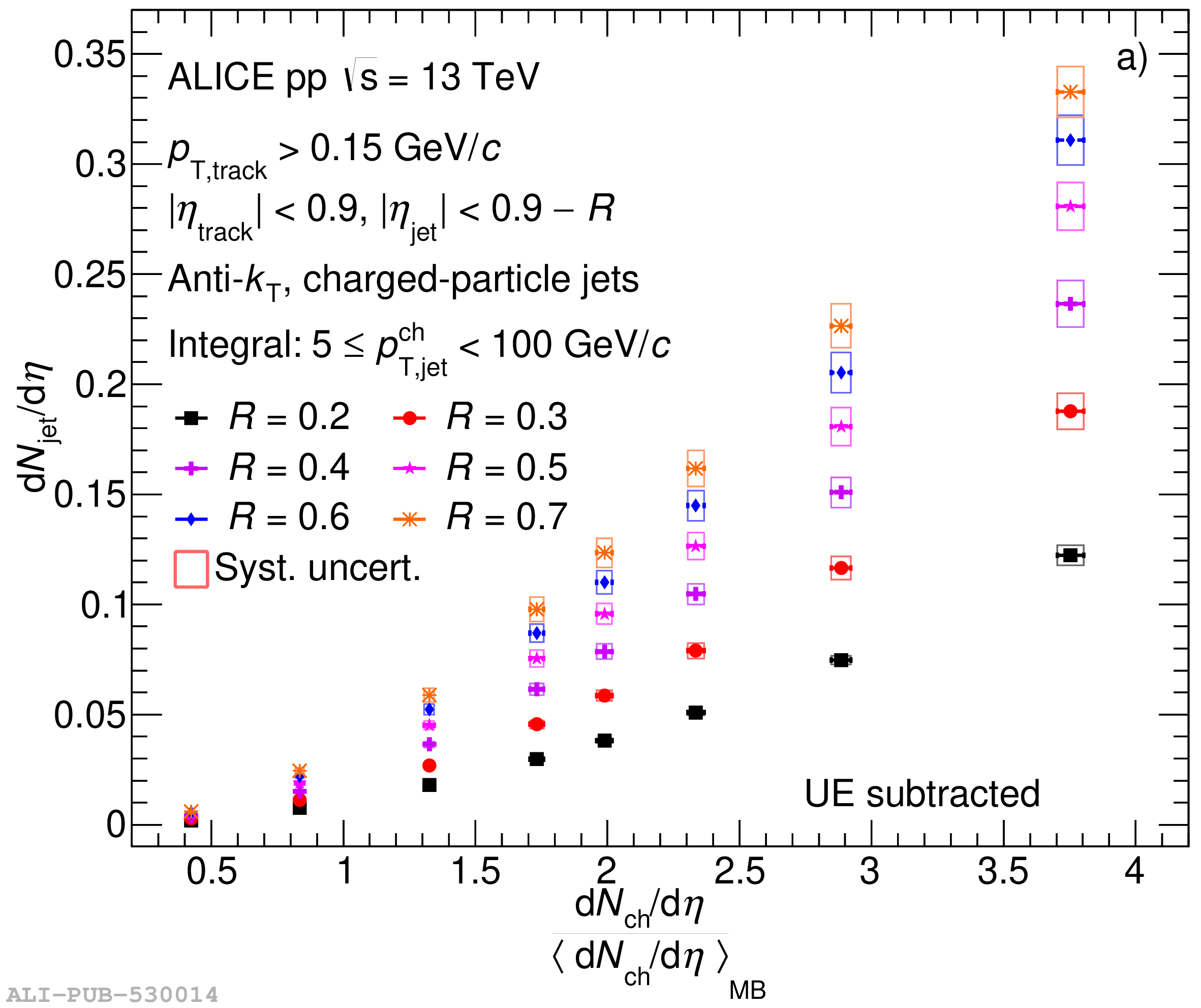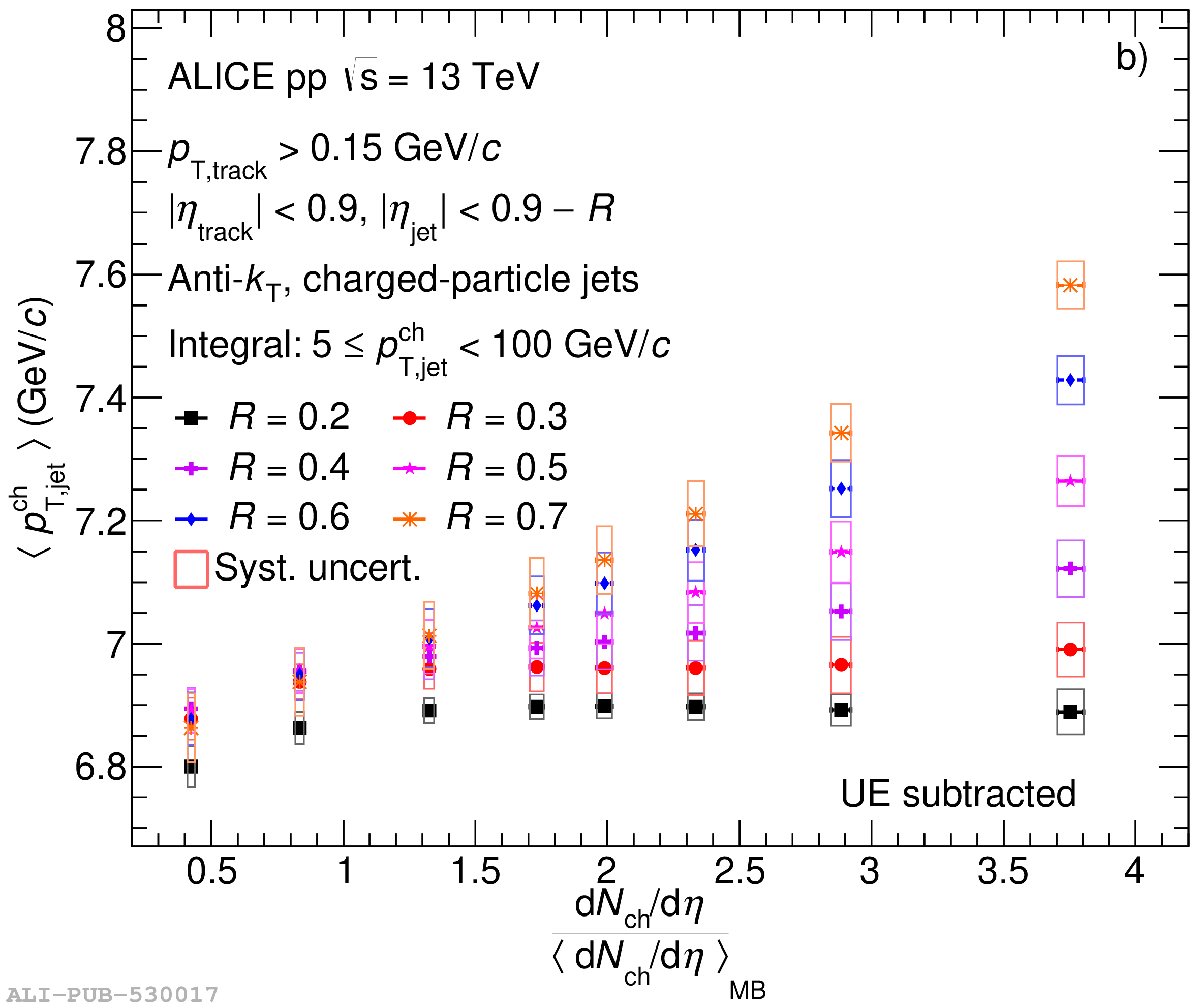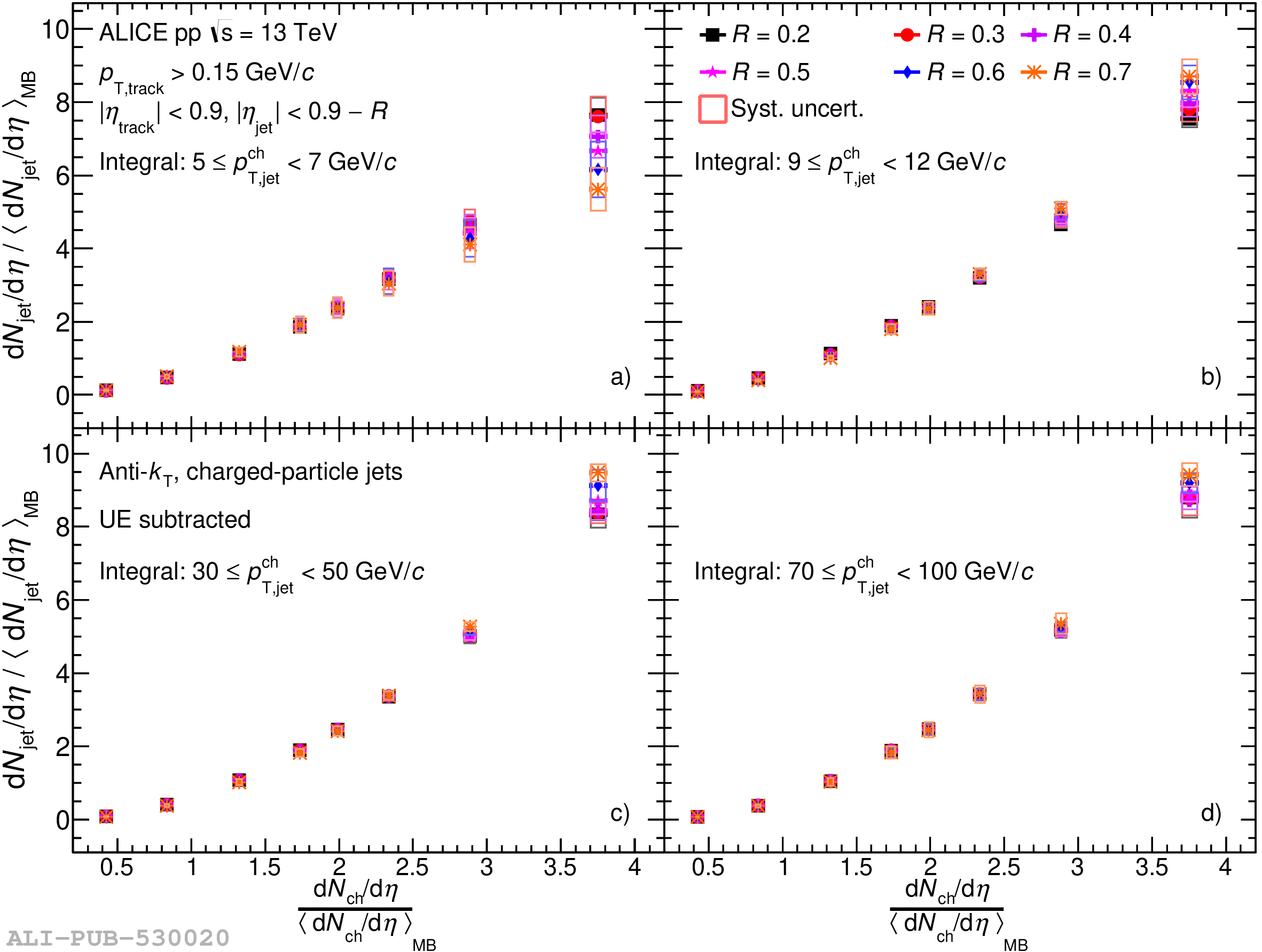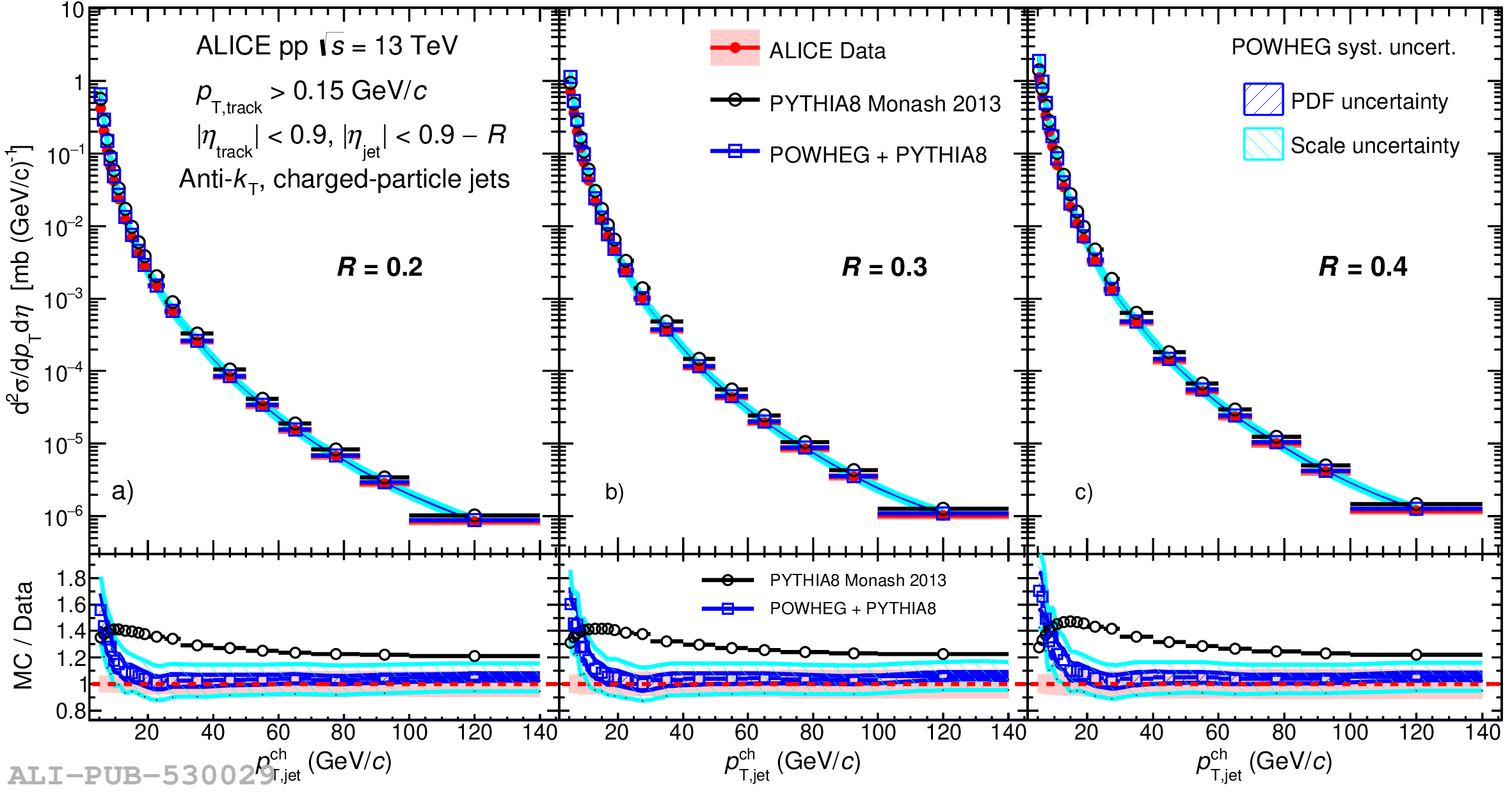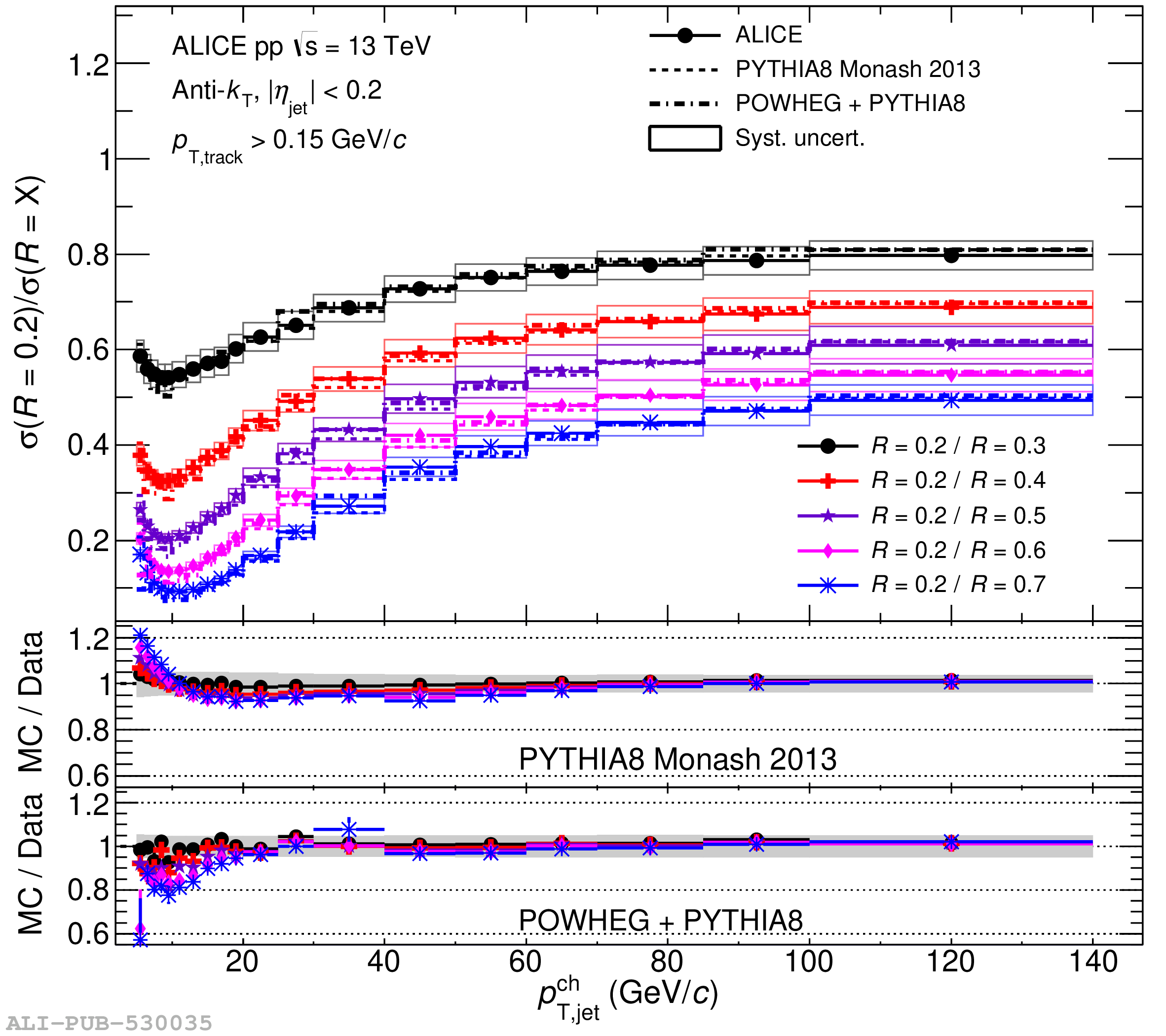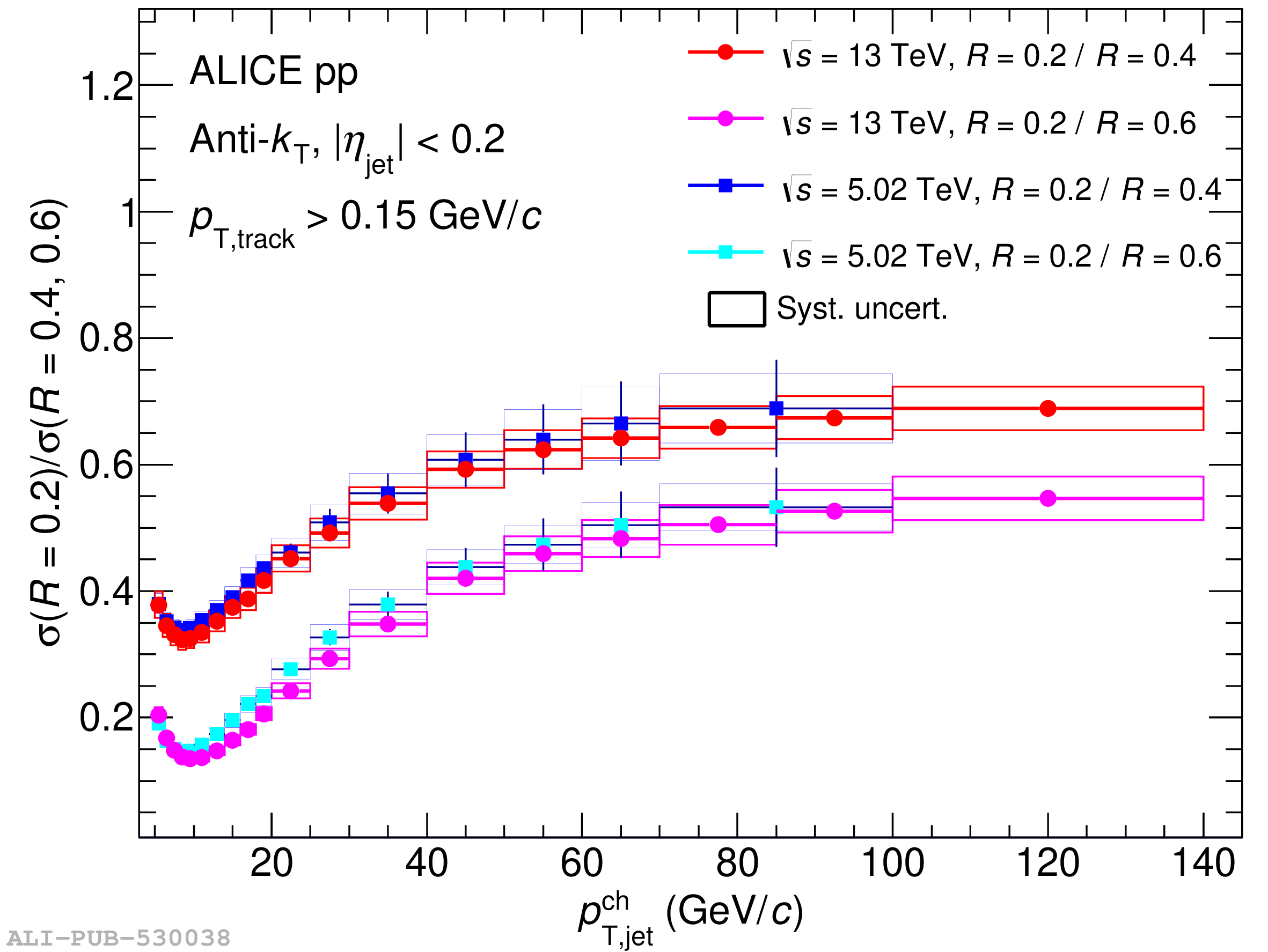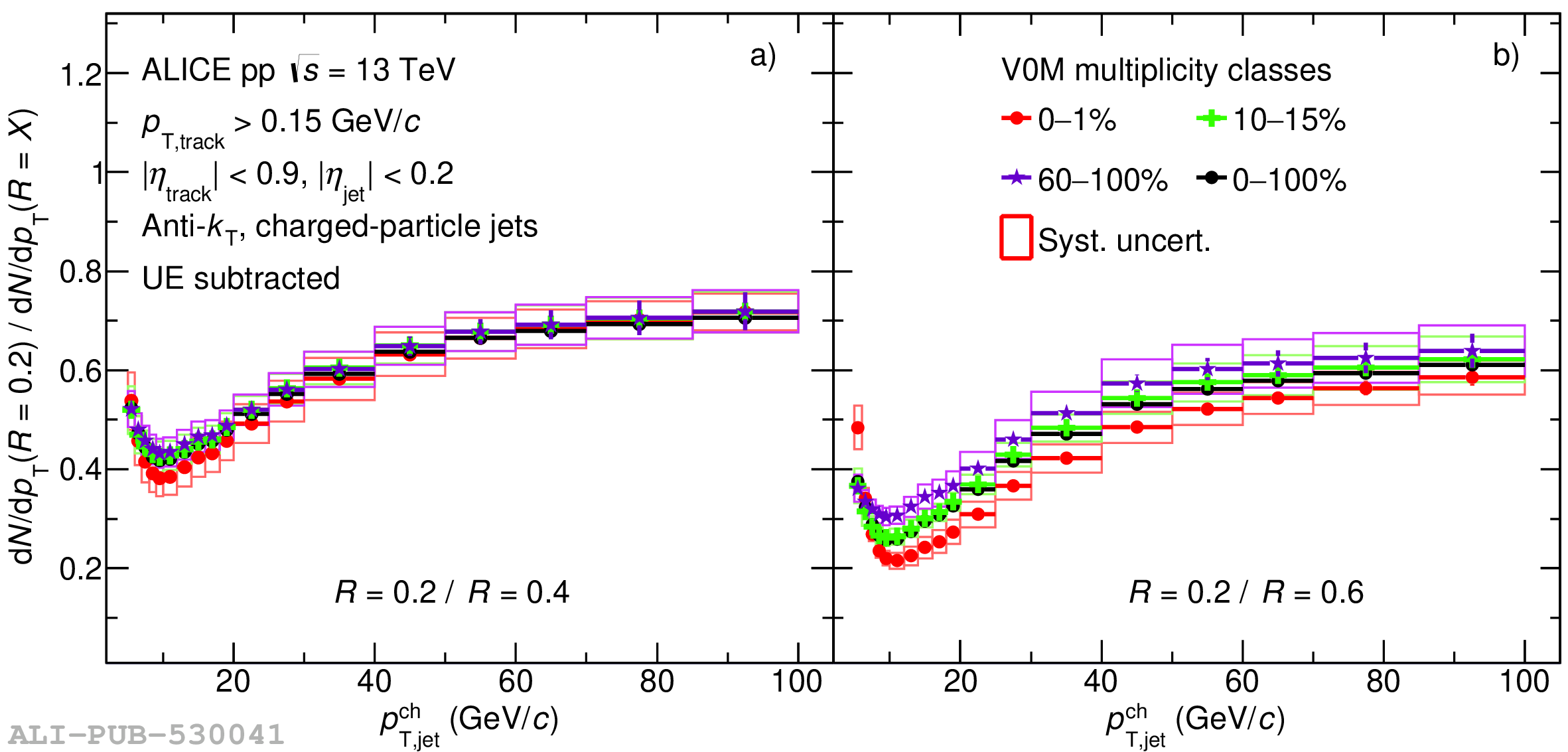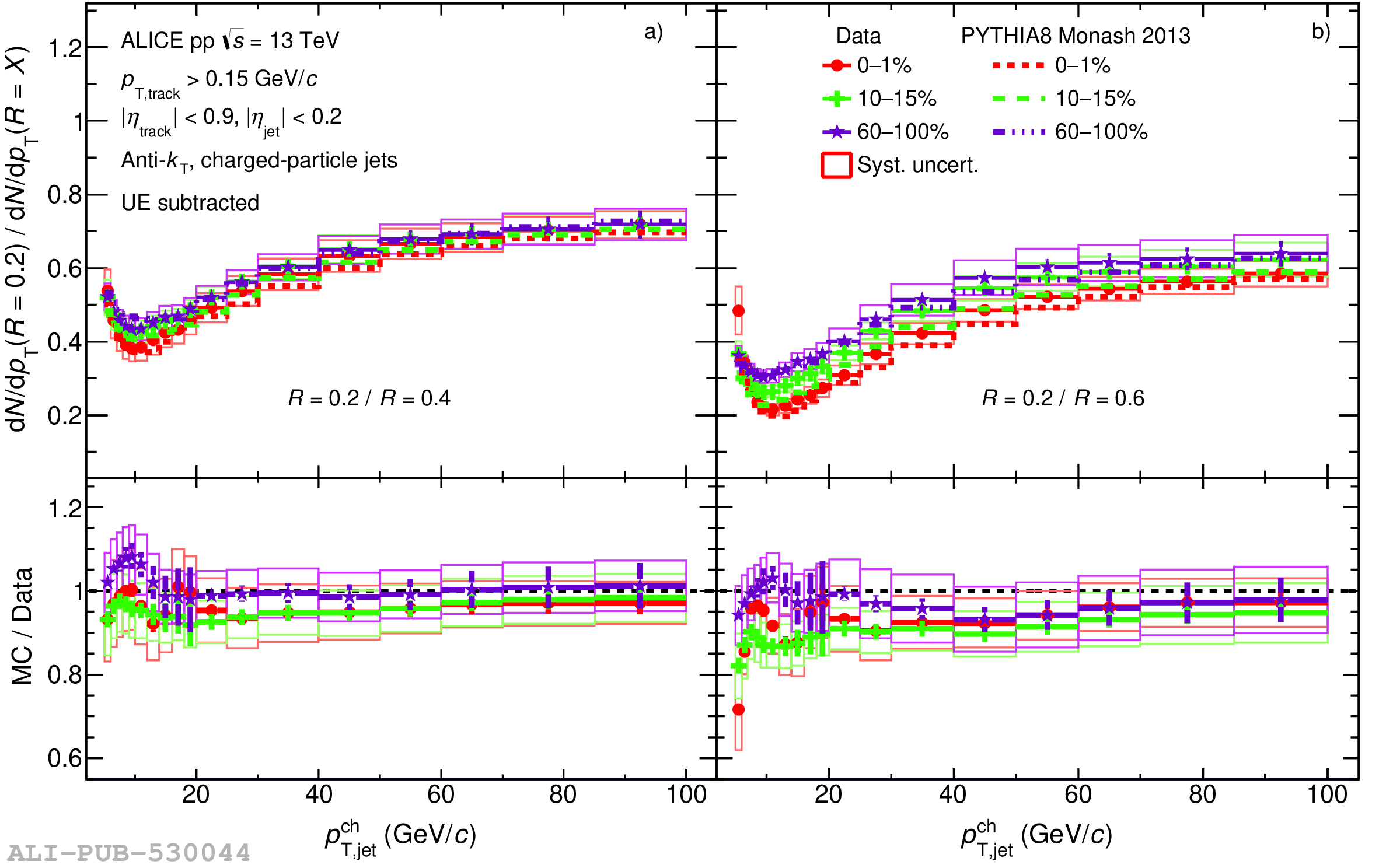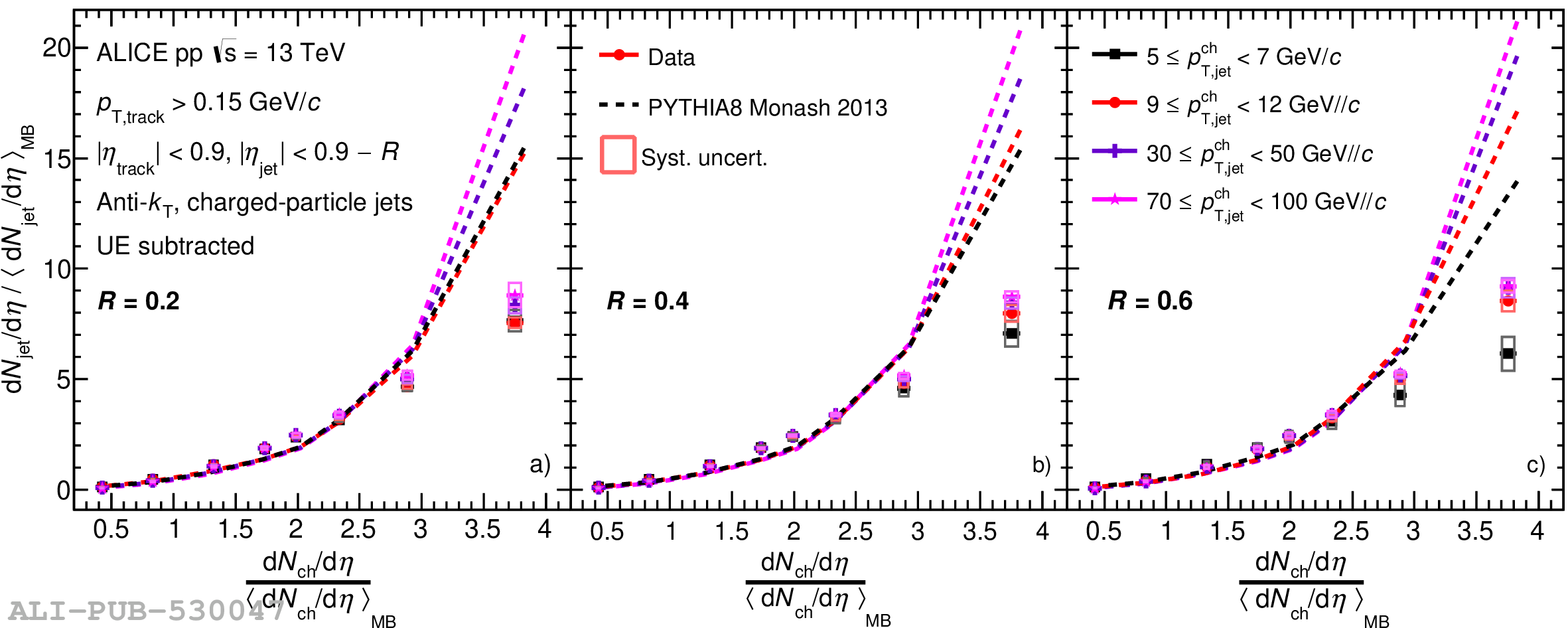The multiplicity dependence of jet production in pp collisions at the centre-of-mass energy of $\sqrt{s} = 13\ \mathrm{TeV}$ is studied for the first time. Jets are reconstructed from charged particles using the anti-$k_\mathrm{T}$ algorithm with resolution parameters $R$ varying from $0.2$ to $0.7$. The jets are measured in the pseudorapidity range $|\eta_{\rm jet}|<~ 0.9-R$ and in the transverse momentum range $5<~p_\mathrm{T,jet}^{\rm ch}<~140\ \mathrm{GeV}/c$. The multiplicity intervals are categorised by the ALICE forward detector V0. The $p_{\mathrm{T}}$ differential cross section of charged-particle jets are compared to leading order (LO) and next-to-leading order (NLO) perturbative quantum chromodynamics (pQCD) calculations. It is found that the data are better described by the NLO calculation, although the NLO prediction overestimates the jet cross section below $20\ \mathrm{GeV}/c$. The cross section ratios for different $R$ are also measured and compared to model calculations. These measurements provide insights into the angular dependence of jet fragmentation. The jet yield increases with increasing self-normalised charged-particle multiplicity. This increase shows only a weak dependence on jet transverse momentum and resolution parameter at the highest multiplicity. While such behaviour is qualitatively described by the present version of PYTHIA, quantitative description may require implementing new mechanisms for multi-particle production in hadronic collisions.
Eur. Phys. J. C 82 (2022) 514
HEP Data
e-Print: arXiv:2202.01548 | PDF | inSPIRE
CERN-EP-2022-011

